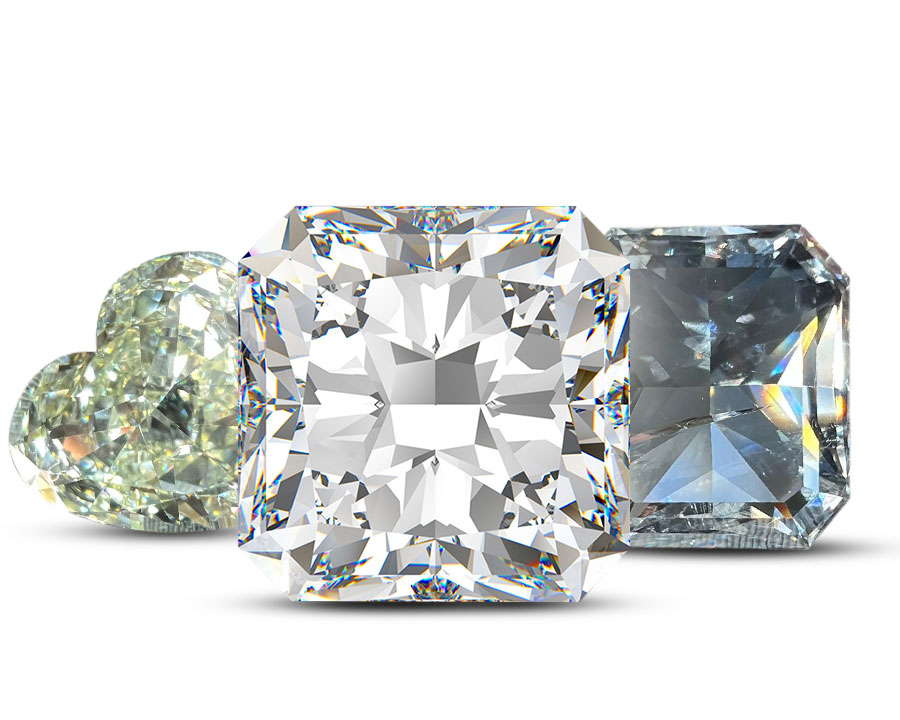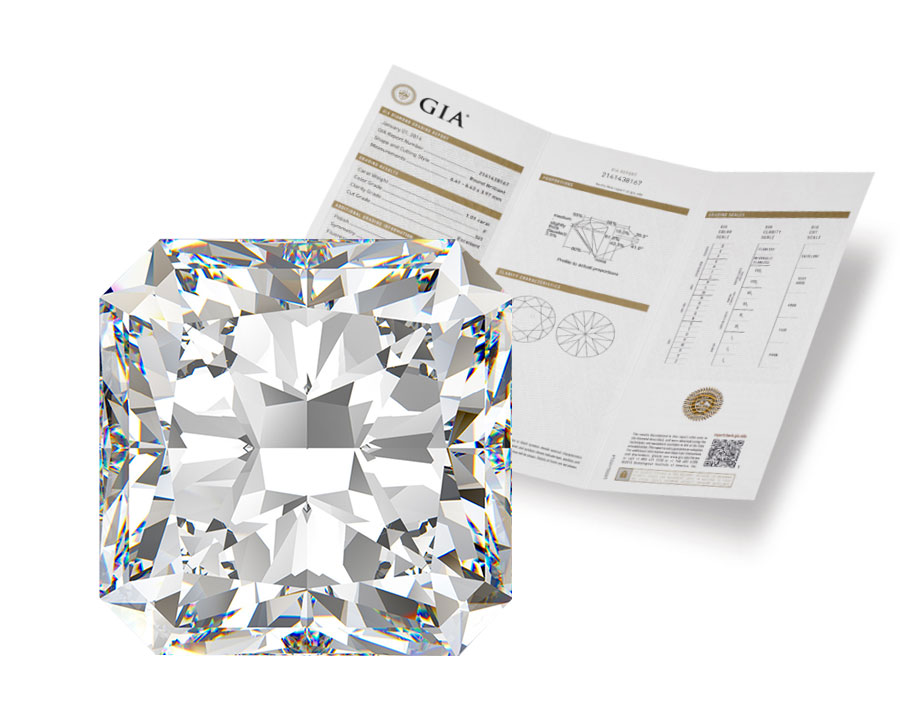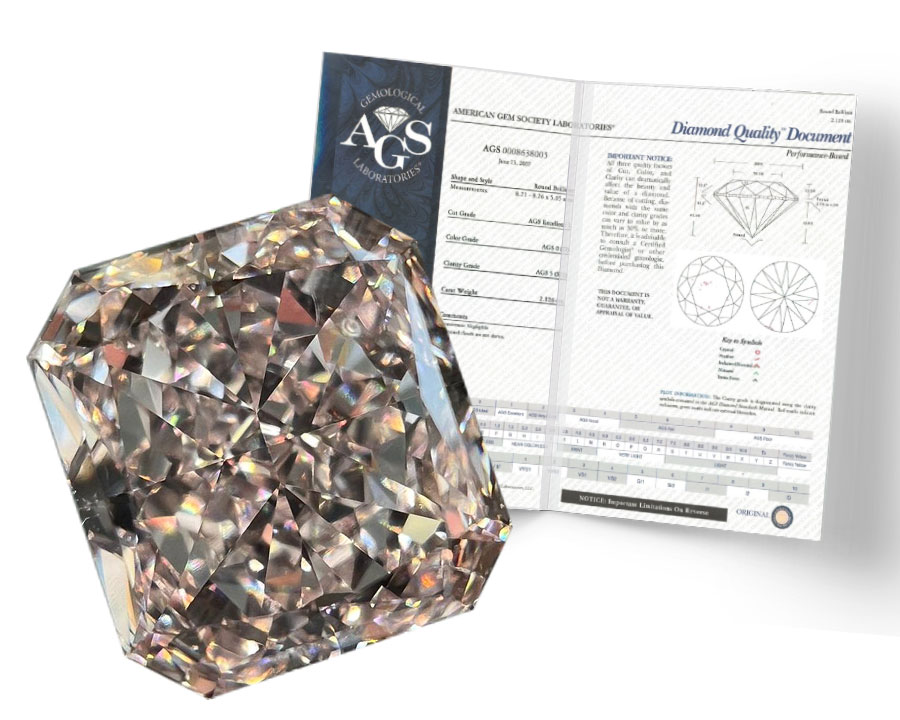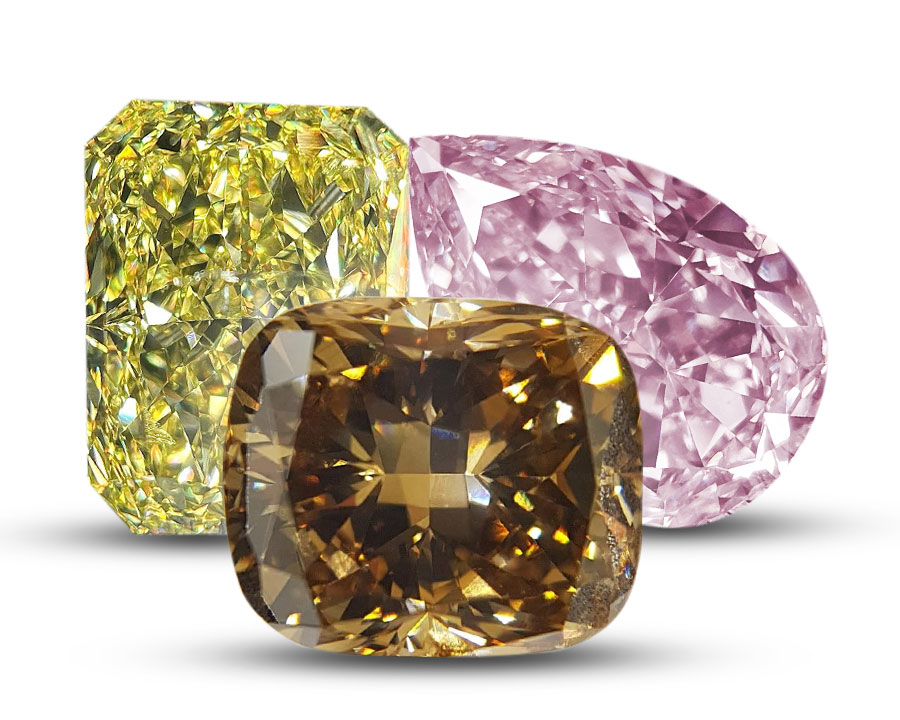Diamond colors
When we talk about fancy colored diamonds, their most important characteristic is color. Unlike colorless diamonds, where total value is determined by the 4Cs (carat, clarity, color, and cut), in the case of colored diamonds, the role of color is much more important and often outweighs the importance of other factors such as clarity.

When talking about white diamonds, which are also called colorless, their value is due precisely to the absence of color. However, in the case of fancy colored diamonds, the presence of color, its intensity and clarity play a decisive role in determining the value of these stones.
The natural fancy color diamonds found by most do not usually have one pure color. In some cases, diamonds have a combination of two, three, or even four colors within the stone itself.
Diamond score
Colored and white diamonds are graded using different scales. Here are the main scales used to rate colored and white diamonds:
White diamonds:
1. GIA (Gemological Institute of America) Scale: For white diamonds, the GIA uses a color scale that rates shades from "D" (colorless) to "Z" (bright yellow or brown). The closer to the letter "D" on the scale, the whiter and more valuable the diamond is considered.
2. AGS (American Gem Society) scale: AGS also uses a color scale where "0" represents a colorless diamond and higher values indicate a gradual increase in color.

Colored diamonds:
1. GIA (Gemological Institute of America) scale: The GIA color diamond rating scale consists of 11 main color categories, ranging from "Fancy Light" (light shade) to "Fancy Vivid" (bright shade). Within each category there may be refinements, such as "Fancy Intense Yellow" (intense yellow).
2. AGS (American Gem Society) Scale: AGS also uses a similar scale for colored diamonds, grading color shades from "1" (best color) to "10" (worst color).

The differences between colored and white diamonds lie in their evaluation and perception of color. Colored diamonds are graded by color saturation and hue, and color hues can vary significantly. White diamonds, on the other hand, are rated by how close they are to a colorless state, in which case the goal is to achieve maximum whiteness.
Colored diamonds are unique and rare, and their value depends on the hue, intensity and purity of the color. White diamonds, on the other hand, strive for the absence of color and maximum transparency.
Definition of colored diamonds
In the case of colored diamonds, their color shades can range from yellow and brown to a variety of colors such as pink, blue, green, purple and others. Color is determined by gemologists using standard color rating scales such as GIA (Gemological Institute of America) and AGS (American Gem Society). These scales help classify diamonds by their hue, saturation, and hue.
Colored diamonds are rare and valuable due to their uniqueness and aesthetic appeal. The more intense and rare the color of a diamond, the higher its value and demand.
Each color of a diamond is due to certain factors incorporated into its structure during its formation or as a result of various conditions that the diamond has encountered over time. For example, yellow is due to the presence of nitrogen, and blue is due to the presence of boron. While the origin of the colors is still up for debate, there is a widespread belief that the pink color of a diamond is due to the tremendous pressure placed on its crystal lattice, which gives it its unique hue.
Color Intensity
The intensity is rated on a scale that may vary depending on the laboratory or gemological organization. However, the most common and widely accepted scale is the GIA scale.
The GIA color intensity scale includes the following categories:
1. Faint (weak)
2. Very Light (very weak)
3. Light (light)
4. Fancy Light (light shade)
5. Fancy (saturated)
6. Fancy Intense (intense)
7. Fancy Vivid (bright)
8. Fancy Deep (deep)
9. Fancy Dark (dark)
10. Fancy Black (black)
On this scale, colored diamonds are rated by the degree of saturation and brightness of their color. The closer a diamond is to a "Fancy Vivid" or "Fancy Intense" category, the more intense and intense its color is considered to be, making it more valuable and rarer.
It is important to note that this assessment is an important factor in determining its price and value in the market.

Primary and secondary color tones
According to the GIA system, the color tones of diamonds are divided into primary and secondary. Primary color tones of a diamond:
- White: This is a perfectly clear diamond with no visible color casts.
- Yellow: A shade of yellow that can range from subtle to intense.
- Brown: Various shades of brown, from light to dark.
- Secondary color tones of a diamond:
- Green: May have weak or intense green tints.
- Blue: A weak or intense blue tint.
- Pink: Pink hues may be present in some diamonds and their intensity may vary.
A diamond's color tones are graded using the GIA standard color scale, which starts with the letter D (colorless) and goes up to the letter Z (the most prominent yellow or brown shade). Diamonds with color tones D, E and F are considered "colorless" and are generally considered the most valuable.
Secondary color tones can affect the price and appearance of a diamond, but some people prefer diamonds with certain hues, such as pink or blue, due to their uniqueness and personality.
Additional names for colored diamonds
Most fancy color diamonds are usually referred to by their color, but there are a few color categories that have additional names. For example, diamonds with a brown tint may be referred to as chocolate, cognac, or champagne. Yellow diamonds are often referred to as Canarian diamonds, and a special type of bright yellow diamond is known as a dhimmi. While these terms are partly related to marketing tactics, they can sometimes refer to certain types of diamonds in the respective color category. For example, the Canarian diamond denotes fancy rich yellow or bright yellow stones. Zimmi diamonds have a distinctive yellow tint associated with deposits in Sierra Leone.
However, it is important to note that cut, clarity, and carat size also play a role in determining the value of colored diamonds, although their value is always inferior to that of color. In the case of fancy colored diamonds, the most important thing is their color characteristics!
If you want to buy diamond jewelry, then Kantor Jewelry will be happy to help you find the best diamond and create a unique jewelry piece with a custom design. We don't buy stones wholesale, we look for the best, most beautiful and profitable personal option for our clients. We seek out special stones for your request until you are satisfied.
Kantor Jewelry will help you to find the best setting option for your stone so it can please you with its beauty for many years as a part of a unique jewelry piece that will be passed from generation to generation.
























































